TABLE OF CONTENTS
Marijuana growers are often looking for ways to produce better yields and crops. Because marijuana grows in the shape of a Christmas tree, it means that more light will reach one part of the plant than other areas. Marijuana training techniques can help you grow better weed!
There are methods of marijuana training that can change this Christmas tree shape and grow more buds for you. Cannabis plant training can be done by even the novice cannabis cultivator.
Here is a look at some of the ways to do marijuana training for increased yields and better buds.
Marijuana Training Techniques
Super Cropping
This is a name given to a group of methods performed by experienced growers during the vegetative growth period to increase and or improve the overall crop yields. Super Cropping usually begins during the second or third week of vegetative growth and can continue throughout the vegetative growth period.
There are five (5) main Super Cropping methods; crimping, topping, trimming, bending and fiming.
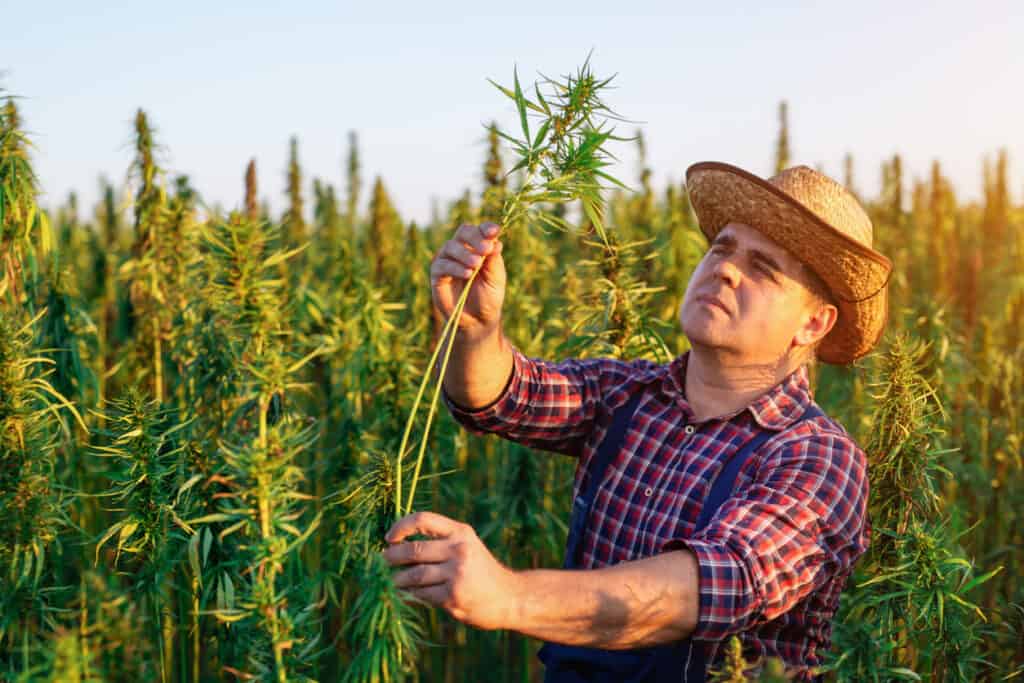
1. Crimping Cannabis Plants
This is an easy growth training method for experienced growers. This is simply pinching or crimping a stem during its vegetative growth. This method causes the plant to rebuild the crimped area better than before crimping. This increases the flow of nutrients throughout the plant, which in turn greatly improves growth.
This is a favorite method of many growers, due to the almost guaranteed increased yields. This technique can begin as early as the seedling stage. Work each branch every 2″, up to once week.
Grasp the stem between two of the nodes with two fingers of each hand. Use one hand to stabilize, while the other gently and slowly twists or bends the stem until a slight snap is felt.
An alternate method to use would be to take the branch between the forefinger and thumb and very gently crush the branch. It must be crushed carefully or risk breaking the branch.
Just squeeze lightly until the branch can be felt to give, then let go. If it gives easily then it has been crimped correctly. If the branch splits or breaks then it has NOT been done correctly. Practice makes perfect with this method of Super Cropping.
2. Topping Cannabis Plants
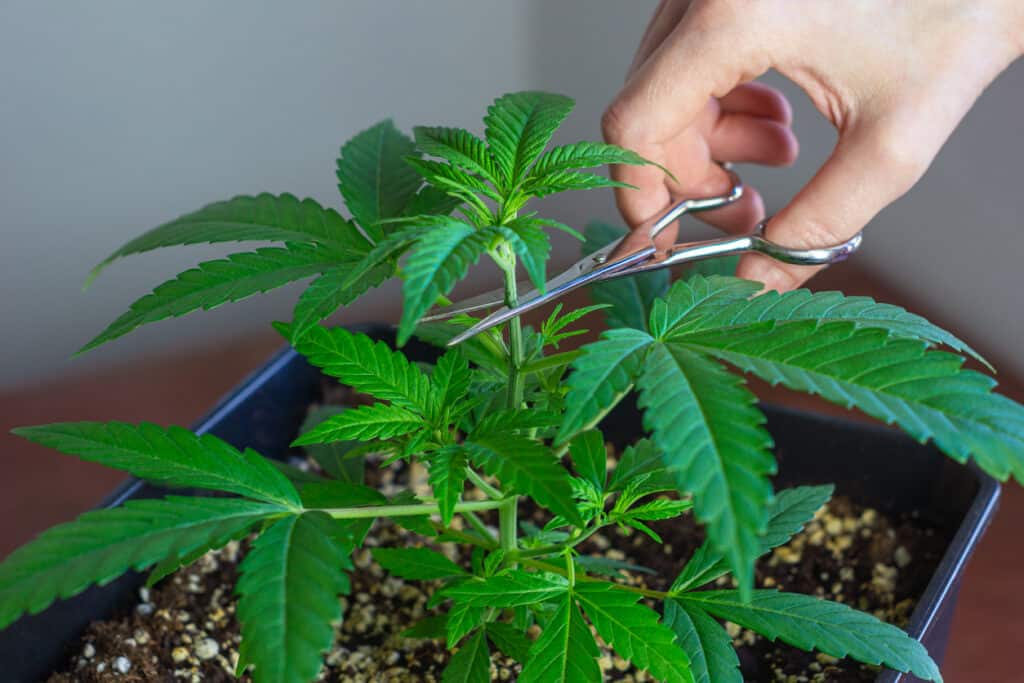
Experienced growers will trim the top of their plant above the last branch formation during the third or fourth week of vegetative growth. The very top is removed by cutting approximately 1/8” above the node. The main stem now will grow in two or more directions, creating a V-shape at the top of the plant.
This will result in two or more top buds instead of one. It is a gamble when you use this topping method. It does not guarenttee better results. In some cases the ‘topped' plant ends up producing two small buds instead of two or more bigger ones.
Also, each strain has a maximum limit for bud production that cannot be improved upon because it is genetically predetermined. Some strains aren't so flexible and the two top buds will simply share the same size of bud that a single top would have produced on the same plant. This topping method is strain-dependent, so proceed carefully with this pruning method.
It has been found that plants that are pruned can remain in the vegetative growth stage for as much as twice as long as normal, but the end result will be a very bushy plant with multiple node regions that should all produce buds. Wait until the trimming process is finished which is usually about four to six more weeks of vegetative growth before flowering the plants.
3. Tying Cannabis Plants
By taking string or stakes or another method the grower will move a branch or stem to prevent it from shading or overgrowing another top or branch. This method is very good for assuring that all areas of the plant will receive a full share of light and can grow unimpeded.
By carefully tying a branch over up to 90 degrees it will force the branch to grow horizontally and the buds at each of the nodes to grow upward toward the light. This method is very good when there is limited space for the overall plant to grow vertically.
An alternate to tying is to use a plant cage. The company “Global Garden Friends” makes a nice product called the “Ultimate Plant Cage” that helps the plant get more light to it.
4. Bending Cannabis Plants
Plants naturally grow towards light in order to best position themselves for photosynthesis. By bending a branch towards light it will increase plant yield for two reasons. One: the branch gets to grow into an area where it hopefully will grow unobstructed from blockage. Two: the lower branches receive the light that would otherwise be used by the branch that was bent.
5. FIM Pruning Cannabis Plants
FIM stands for “Fuck I Missed”. It is a variation of topping whereby the grower doesn't cut off the entire top of the shoot. Trim directly at the top, slightly below the center of the node leaving approximately 10% of the top remaining.
This is very important because the vegetation left behind has cells that are rapidly dividing in many different directions. This can lead to multiple tops from a single pruning.
Sea of Green (SOG) for Cannabis Plants
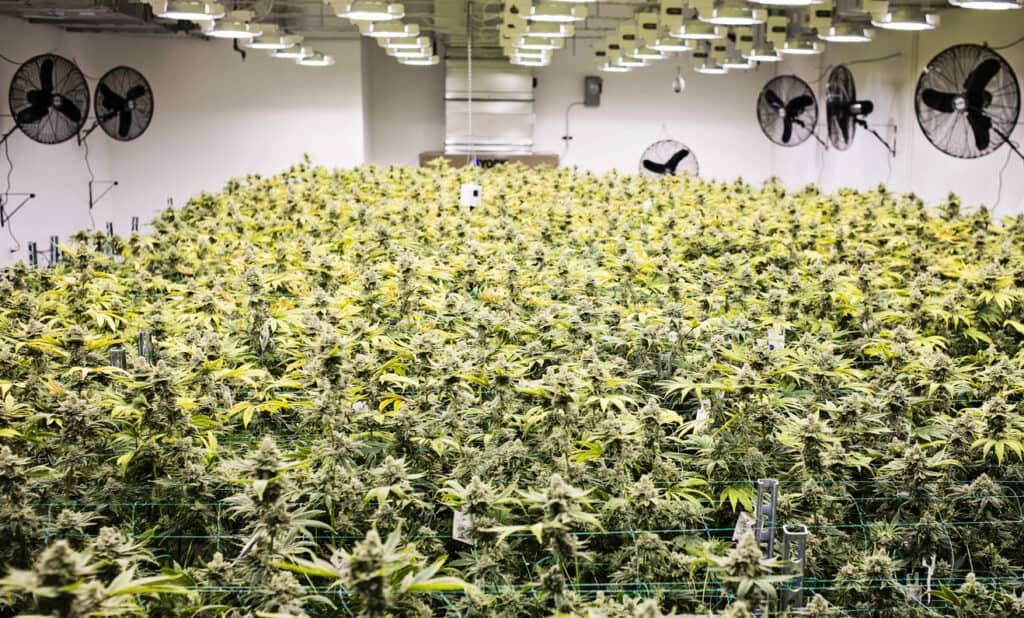
Sea of Green is a process of harvesting many small plants in a tight grouped area. Instead of growing a few large plants for a longer vegetative period of time, many smaller plants are grown closer together. This allows the grower to grow a crop of plants in a shorter period of time.
Experienced growers will normally grow 4 plants per square foot during the early stage and reduce this to 1 plant per square foot for mature plants at harvest. This method will allow each plant to grow a single large top bud.
Since the most effective indoor lighting only penetrates about 18 inches into the plant this method makes good use of the lighting and space available. Tall indoor plants do not successfully grow at the bottom so it is a waste of time and light to grow tall plants, which do not produce a good quality yield on the bottom branches.
The plants will create a canopy that traps most of the light at the top level of the plants. Very little light can penetrate the canopy because the plants are grown close together.
Use of a trellis laid out over the top of the canopy will support the plants as they begin to droop under the weight of the mature buds. It's not the size of the plant, but the maturity and quality of the harvested buds that counts.
Twice as many plants grown half as big will fill the grow space twice as fast, so harvests take place more often. The experienced grower will choose plants that have an as short as possible flowering period, such as Indicas and Indica dominate hybrids.
It's good to avoid “topping” plants grown under the Sea Of Green method in order to grow the plants as fast as possible.
Using a twist tie, wrap it around the top of the plant, then bend it over until the top is bent over 90 to 180 degrees.
Attach this to the main stem lower on the plant or to the trellis. Do this for approximately one week and then remove the twist tie.
The plant will now be trained to take less vertical space and to grow bushier. This will also allow the lower branches to receive more light and grow upward.
Sea of Green enables growers to harvest the main cola (top) of the plant. Bottom branches, which do not receive full light, should be removed and can be used to start clones.
Screen of Green (SCROG) Cannabis Growing Methods
The Screen of Green and the Sea of Green growing methods are quite similar and in some cases the names of the two methods are used interchangeably. The screen of green (SCROG) method is used in indoor grow systems when there are height limitations.
A mesh screen, usually of chicken wire or other type of netting, is attached at a desired height above the plants. This will limit the height that the plants can grow and will force the plants to grow more horizontally versus vertically.
This method will keep the height of the plants at an even level, which will prevent the plants from getting too close to the light and getting burnt. Experienced growers can have a consistent higher yield using this method.
Trellising Cannabis Plants
The use of a trellis to support the plants during the growing process, especially during the later flowering stage when the flower tops become quite heavy can be critical to the successful completion of the grow operation.
Large heavy buds especially those grown indoors will need the support so as to not fall over and break the stems. The stem structure of most plants, especially during the later stages of flowering is not strong enough to support the weight of the mature buds.
A trellis system can usually be purchased at the local medical cannabis grow supply store or on the Internet.
A simple trellis system for growing cannabis can also be created out of bungee cords, cotton rope and wooden or bamboo stakes. Some more creative experienced growers often manufacture a trellis support system using commercially available PVC tubing and fittings.
Bamboo stakes alone are also an excellent tool for supporting a single stem or flower top. Simply use a stake tall enough to reach from the bottom of the planting container to the top of the bud. Push the bamboo stake into the growing container and using a twist tie secure the stem and/or flower top to the stake.
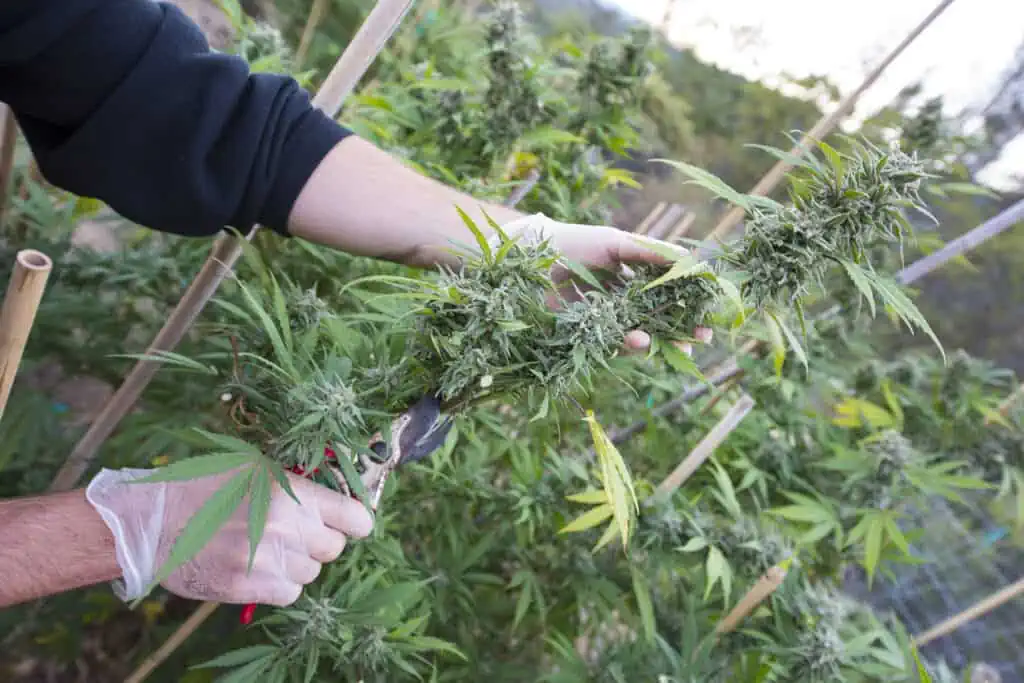
Types of Marijuana Training Techniques Summary
1. Low-Stress Training (LST)
This technique involves gently bending the branches and securing them in place without causing significant harm to the plant.
Advantages:
- Encourages horizontal growth, optimizing light exposure.
- Stimulates the growth of more bud sites.
- Reduces the risk of mold and pests due to improved airflow.
How to do it:
- Gently bend the taller branches down and secure them using soft ties.
- Repeat the process as the plant grows, directing its shape and structure.
2. High-Stress Training (HST)
HST methods induce a higher level of stress on the plant. These techniques often involve cutting or breaking parts of the plant.
Advantages:
“
There are over 300,000 jobs in the cannabis industry. CTU trained me for one of them!

Makes $24.50 @ THC +
- Rapid increase in bud sites post-recovery.
- Can significantly increase the overall yield when done correctly.
Common HST techniques include:
- Topping: Removing the plant's main tip to encourage two main colas.
- Fimming: A variation of topping where around 75% of the tip is removed, leading to multiple top colas.
- Super cropping: Intentionally breaking inner branch tissues without damaging the outer layer, then bending it.
3. Screen of Green (ScrOG)
Involves placing a horizontal screen above the growing medium and weaving the branches through as they grow.
Advantages:
- Ensures even light distribution for all branches.
- Improves yield by converting more branches into main colas.
How to do it:
- Install a screen 20-25cm above the growing medium.
- Weave the branches through the screen as they grow.
Expert Grower Tips For Training Cannabis Plants
- Patience is key. Don’t rush; gradual bending is better than snapping a branch.
- Consistency. Regularly check and adjust your marijuana plants.
- Recovery Time. After HST (high stress training) techniques, allow your weed plant some time to recover before inducing more stress.
- Optimal Health. Ensure your cannabis plants are healthy before starting; stressed or sick plants might not handle training well.
To learn how to grow cannabis at the leading cannabis college sign up at Cannabis Training University.
At CTU, students can learn how to grow marijuana on any budget.
Become a Master of Cannabis Grower with online training from CTU!

Luis Cordova
Luis Cordova is a distinguished author, and renowned expert in cannabis cultivation, who possesses a Master's degree in Plant Biotechnology and Pharmaceutical Science. As a valued contributor to highly esteemed publications such as Cannabis Training University and Maximum Yield Magazine, Luis has emerged as a trusted source of guidance and knowledge in the cannabis industry. Having written thousands of informative articles, Luis is widely recognized for his comprehensive expertise on cultivating cannabis, both indoors and outdoors.


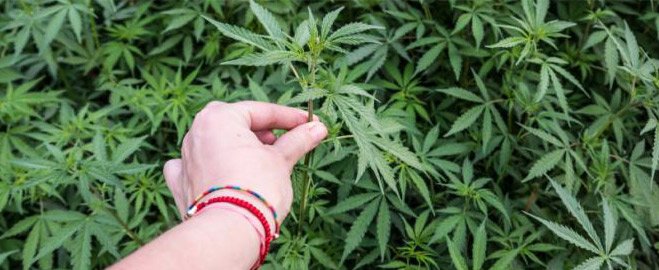






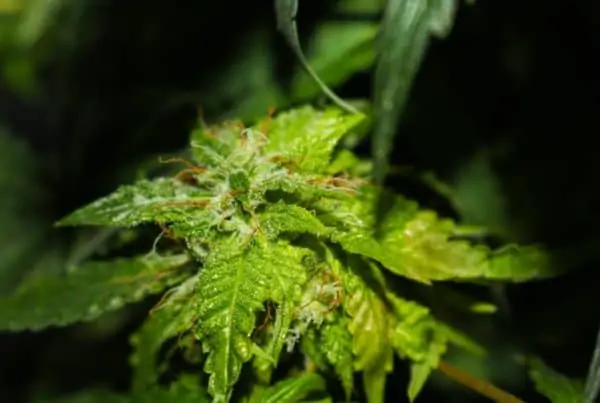
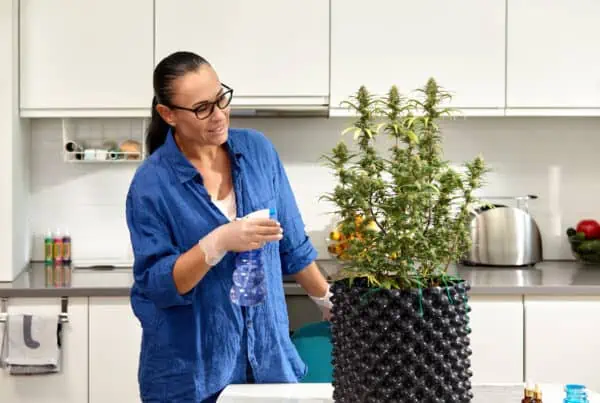

 Jeff was involved in an accident where he endured a traumatic brain injury. He had a week-long stay in ICU where brain surgeons
Jeff was involved in an accident where he endured a traumatic brain injury. He had a week-long stay in ICU where brain surgeons  100% risk free money back guarantee within 48 hours after purchase if student has not completed any of the courses or exams.
100% risk free money back guarantee within 48 hours after purchase if student has not completed any of the courses or exams.